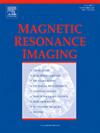Qualitative and quantitative analysis of functional cardiac MRI using a novel compressed SENSE sequence with artificial intelligence image reconstruction
IF 2
4区 医学
Q2 RADIOLOGY, NUCLEAR MEDICINE & MEDICAL IMAGING
引用次数: 0
Abstract
Background
To evaluate the feasibility of combining Compressed SENSE (CS) with a newly developed deep learning-based algorithm (CS-AI) using a Convolutional Neural Network to accelerate balanced steady-state free precession (bSSFP)-sequences for cardiac magnetic resonance imaging (MRI).
Methods
30 healthy volunteers were examined prospectively with a 3 T MRI scanner. We acquired CINE bSSFP sequences for short axis (SA, multi-breath-hold) and four-chamber (4CH)-view of the heart. For each sequence, four different CS accelerations and CS-AI reconstructions with three different denoising parameters, CS-AI medium, CS-AI strong, and CS-AI complete, were used. Cardiac left ventricular (LV) function (i.e., ejection fraction, end-diastolic volume, end-systolic volume, and LV mass) was analyzed using the SA sequences in every CS factor and each AI level. Two readers, blinded to the acceleration and denoising levels, evaluated all sequences regarding image quality and artifacts using a 5-point Likert scale. Friedman and Dunn's multiple comparison tests were used for qualitative evaluation, ANOVA and Tukey Kramer test for quantitative metrics.
Results
Scan time could be decreased up to 57 % for the SA-Sequences and up to 56 % for the 4CH-Sequences compared to the clinically established sequences consisting of SA-CS3 and 4CH-CS2,5 (SA-CS3: 112 s vs. SA-CS6: 48 s; 4CH-CS2,5: 9 s vs. 4CH-CS5: 4 s, p < 0.001). LV-functional analysis was not compromised by using accelerated MRI sequences combined with CS-AI reconstructions (all p > 0.05). The image quality loss and artifact increase accompanying increasing acceleration levels could be entirely compensated by CS-AI post-processing, with the best results for image quality using the combination of the highest CS factor with strong AI (SA-CINE: Coef.:1.31, 95 %CI:1.05–1.58; 4CH-CINE: Coef.:1.18, 95 %CI:1.05–1.58; both p < 0.001), and with complete AI regarding the artifact score (SA-CINE: Coef.:1.33, 95 %CI:1.06–1.60; 4CH-CINE: Coef.:1.31, 95 %CI:0.86–1.77; both p < 0.001).
Conclusion
Combining CS sequences with AI-based image reconstruction for denoising significantly decreases scan time in cardiac imaging while upholding LV functional analysis accuracy and delivering stable outcomes for image quality and artifact reduction. This integration presents a promising advancement in cardiac MRI, promising improved efficiency without compromising diagnostic quality.
定性和定量分析功能心脏MRI使用新的压缩序列与人工智能图像重建。
背景:评估使用卷积神经网络将压缩感知(CS)与新开发的基于深度学习的算法(CS- ai)结合起来加速平衡稳态自由进动(bSSFP)序列用于心脏磁共振成像(MRI)的可行性。方法:对30名健康志愿者进行3 T MRI扫描。我们获得了用于心脏短轴(SA,多次屏气)和四室(4CH)视图的CINE bSSFP序列。对于每个序列,使用四种不同的CS加速和CS- ai重建,并使用三种不同的去噪参数,CS- ai中等,CS- ai强和CS- ai完全。利用各CS因子和各AI水平的SA序列分析心脏左室(LV)功能(即射血分数、舒张末期容积、收缩末期容积和左室质量)。两名读者,对加速和去噪水平视而不见,使用5点李克特量表评估所有序列的图像质量和伪影。定性评价采用Friedman和Dunn多重比较检验,定量指标采用ANOVA和Tukey Kramer检验。结果:与临床建立的由SA-CS3和4ch - cs2,5组成的序列相比,sa -序列的扫描时间最多可减少57 %,4ch -序列的扫描时间最多可减少56 % (SA-CS3: 112 s vs SA-CS6: 48 s;4CH-CS2, 5:9 s vs. 4CH-CS5: 4 s, p 0.05)。CS-AI后处理可完全补偿随加速度水平增加而产生的图像质量损失和伪影增加,其中CS因子最高与强AI相结合的图像质量效果最佳(SA-CINE: Coef:1.31, 95 %CI:1.05-1.58;4CH-CINE:系数:1.18,95 %CI:1.05-1.58;结论:将CS序列与基于人工智能的图像重建相结合进行降噪,可以显著缩短心脏成像的扫描时间,同时保持左室功能分析的准确性,并在图像质量和伪影减少方面提供稳定的结果。这种整合是心脏MRI的一个有希望的进步,在不影响诊断质量的情况下有望提高效率。
本文章由计算机程序翻译,如有差异,请以英文原文为准。
求助全文
约1分钟内获得全文
求助全文
来源期刊

Magnetic resonance imaging
医学-核医学
CiteScore
4.70
自引率
4.00%
发文量
194
审稿时长
83 days
期刊介绍:
Magnetic Resonance Imaging (MRI) is the first international multidisciplinary journal encompassing physical, life, and clinical science investigations as they relate to the development and use of magnetic resonance imaging. MRI is dedicated to both basic research, technological innovation and applications, providing a single forum for communication among radiologists, physicists, chemists, biochemists, biologists, engineers, internists, pathologists, physiologists, computer scientists, and mathematicians.
 求助内容:
求助内容: 应助结果提醒方式:
应助结果提醒方式:


